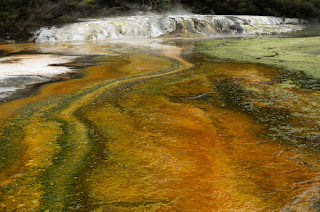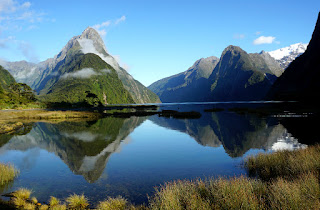December 9, 2022
December 9, 2022
We checked out of our Auckland Airport hotel to begin our journey home. New Zealand is an easy country to tour. About the size of California, it is mostly rural with friendly people and free toilets. The view is picturesque everywhere in almost every direction. No wonder Lord of the Rings was a visual feast for the eyes.
One side of my brain says we finally got unlucky with the rain, but when it really counted, we had clear skies or at least temperate weather. Unwittingly we spent most of our time on the wet side where we couldn’t have expected a rain-free multi-week holiday. After all it is a rain forest for a reason! A late Spring visit, while a tad cooler, also gave us wildflowers in great abundance.
We hiked almost every day visiting seven National Parks and tasting six of New Zealand’s ten Great Walks. We haven't done that since exploring the US in our RV many years ago. But ultimately we are now ‘sun people' and we much prefer our arid West. Unfortunately I am bringing back an unwanted souvenir of the maybe 85 miles we hiked.
At the airport we dropped off our rental car. After three weeks of left lane driving ingrained in my brain, I will probably have trouble back in the USA. Once through security, we ate breakfast in the Business Lounge. We had to share the small space with the Sydney Kings and their entourage, one of the ten professional basketball teams of this region. In the early afternoon our thirteen-hour flight to Dallas took off. I had to watch the beginning and end of The Hobbit movies to reminisce about our Hobbiton visit yesterday.
Our Tucson flight took off also on time. Finally two flights in a row without a hitch! We circled Tucson to approach the runway from the west giving us a tour of Tucson highlights, including the vast Boneyard Airforce of Davis-Monthan AFB, and ‘A Mountain' (our version of the Hollywood sign). And because we crossed the International Date Line again, we arrived before we left!
We checked out of our Auckland Airport hotel to begin our journey home. New Zealand is an easy country to tour. About the size of California, it is mostly rural with friendly people and free toilets. The view is picturesque everywhere in almost every direction. No wonder Lord of the Rings was a visual feast for the eyes.
One side of my brain says we finally got unlucky with the rain, but when it really counted, we had clear skies or at least temperate weather. Unwittingly we spent most of our time on the wet side where we couldn’t have expected a rain-free multi-week holiday. After all it is a rain forest for a reason! A late Spring visit, while a tad cooler, also gave us wildflowers in great abundance.
We hiked almost every day visiting seven National Parks and tasting six of New Zealand’s ten Great Walks. We haven't done that since exploring the US in our RV many years ago. But ultimately we are now ‘sun people' and we much prefer our arid West. Unfortunately I am bringing back an unwanted souvenir of the maybe 85 miles we hiked.
At the airport we dropped off our rental car. After three weeks of left lane driving ingrained in my brain, I will probably have trouble back in the USA. Once through security, we ate breakfast in the Business Lounge. We had to share the small space with the Sydney Kings and their entourage, one of the ten professional basketball teams of this region. In the early afternoon our thirteen-hour flight to Dallas took off. I had to watch the beginning and end of The Hobbit movies to reminisce about our Hobbiton visit yesterday.
Our Tucson flight took off also on time. Finally two flights in a row without a hitch! We circled Tucson to approach the runway from the west giving us a tour of Tucson highlights, including the vast Boneyard Airforce of Davis-Monthan AFB, and ‘A Mountain' (our version of the Hollywood sign). And because we crossed the International Date Line again, we arrived before we left!
.jpg)
.jpg)
.jpg)
.jpg)




















































